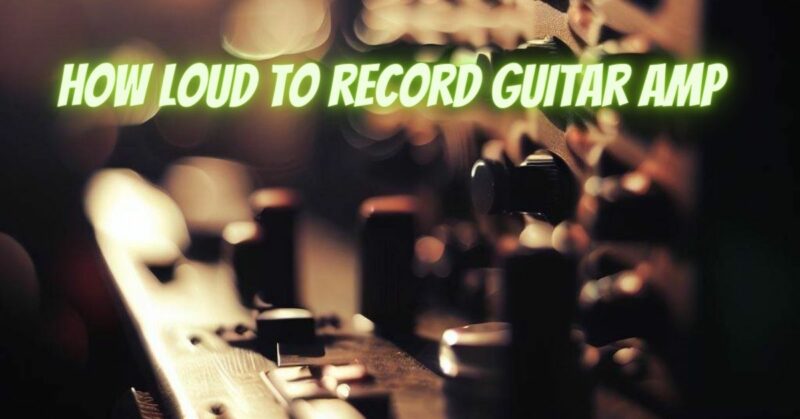When recording a guitar amp, there are a few factors to consider when determining how loud to set the amp. These factors include the type of amp, the type of music you are recording, and your personal preferences.
Type of amp: The type of amp you are using will have a big impact on how loud you need to set it. Tube amps are generally louder than solid-state amps, so you will need to set them lower. If you are using a high-gain amp, you will need to set it even lower to avoid distortion.
Type of music: The type of music you are recording will also affect how loud you need to set the amp. If you are recording a clean guitar sound, you will need to set the amp louder than if you are recording a distorted sound.
Personal preferences: Ultimately, the best way to determine how loud to set your amp is to experiment and see what sounds best to you. However, there are a few general guidelines that you can follow.
- For a clean sound, set the amp so that the speaker is just starting to break up. This will give you a nice, warm sound without any distortion.
- For a distorted sound, set the amp so that the speaker is distorting slightly. This will give you a more aggressive sound.
- If you are using a high-gain amp, set the amp so that the speaker is not distorting. This will help to prevent feedback and keep your sound clean.
Once you have determined how loud to set your amp, you will need to adjust the microphone levels accordingly. The goal is to get a signal that is hot enough to be recorded without clipping.
Adjusting microphone levels: There are a few different ways to adjust microphone levels. One way is to use a microphone preamp with a gain knob. Another way is to use a mixer with a gain knob. You can also adjust the levels in your recording software.
The best way to adjust microphone levels is to experiment and see what sounds best to you. However, there are a few general guidelines that you can follow.
- Set the gain so that the signal is hot enough to be recorded without clipping. You can use a level meter in your recording software to check the levels.
- If the signal is too hot, you can reduce the gain or turn down the amp. If the signal is too soft, you can increase the gain or turn up the amp.
Once you have adjusted the microphone levels, you are ready to start recording!
Here are some additional tips for recording a guitar amp:
- Use a good quality microphone. A good microphone will help to capture the sound of your amp accurately.
- Place the microphone correctly. The position of the microphone will affect the sound of your recording. Experiment with different positions until you find one that you like.
- Use a noise gate. A noise gate can help to reduce unwanted noise from your recording.
- Use a compressor. A compressor can help to even out the volume of your recording.


